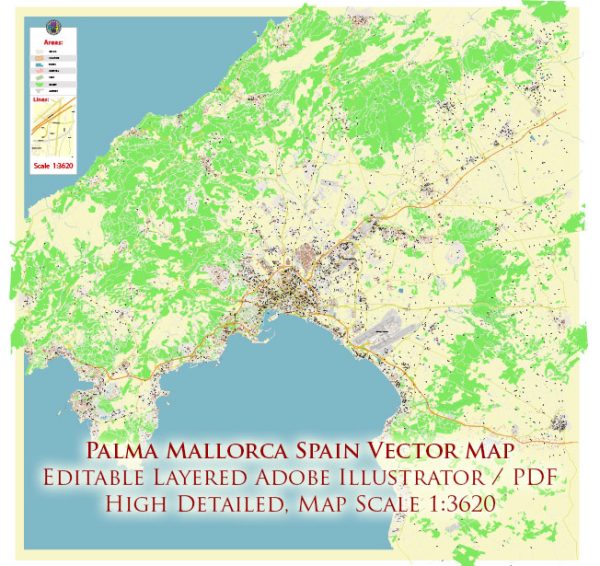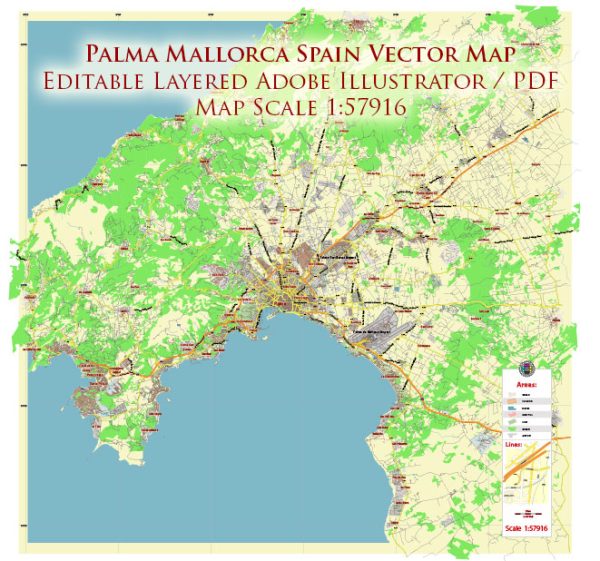Palma de Mallorca, often simply referred to as Palma, is the capital city of the Balearic Islands in Spain, and it boasts a rich architectural heritage that reflects its long history and diverse cultural influences. Here’s a description of the architecture in Palma, Mallorca:
- Cathedral of Santa Maria of Palma (La Seu):
- The most iconic architectural landmark in Palma is the Cathedral of Santa Maria of Palma, commonly known as La Seu. It is a masterpiece of Gothic architecture and dates back to the 13th century.
- The cathedral’s most striking feature is its enormous rose window, which is one of the largest in the world and allows beautifully filtered light into the interior.
- La Seu also incorporates elements of different architectural styles, including the Gothic, Renaissance, and Modernisme, which makes it a unique and evolving structure.
- Bellver Castle:
- This circular castle is a fine example of Gothic architecture and is situated on a hill overlooking the city. It was built in the 14th century and is one of the few circular castles in Europe.
- Bellver Castle is known for its unique design, with a central courtyard and surrounding towers. The castle now houses the Palma History Museum.
- Passeig des Born:
- This tree-lined promenade is a lovely place to take a leisurely stroll and is surrounded by stunning Modernist and Art Nouveau buildings. You can see intricate wrought-iron balconies and ornate facades in this area.
- Arab Baths (Banys Àrabs):
- These are well-preserved baths from the Arab era of Mallorca’s history, featuring a distinct Islamic architectural style. The building dates back to the 10th century and showcases classic Mudejar design with horseshoe arches and geometric patterns.
- Palacio Real de la Almudaina:
- This palace was originally built as an Arab fortress, and it later became the royal residence for Mallorcan monarchs. It combines elements of Romanesque, Gothic, and Renaissance architecture.
- Modernisme Architecture:
- Palma also has several examples of Modernisme architecture, which is Spain’s version of Art Nouveau. The city’s Modernisme buildings often feature floral motifs, decorative tiles, and curved lines. Notable examples include Can Forteza Rey and Gran Hotel.
- Historic Old Town:
- The historic Old Town of Palma is a treasure trove of architectural gems. Wandering through its narrow streets, you’ll encounter ancient palaces, charming courtyards, and beautiful squares that showcase various architectural styles from different periods.
- Palma’s Courtyards (Pati Mallorquí):
- Traditional Mallorcan courtyards, often hidden behind unassuming façades, are another architectural delight. These peaceful, well-preserved spaces are adorned with lush greenery, fountains, and decorative tiles.
Palma’s architecture reflects the city’s layered history, encompassing Roman, Arab, and Spanish influences, resulting in a unique and diverse architectural landscape. From historic Gothic structures to more modern designs, Palma de Mallorca offers a rich visual tapestry for architecture enthusiasts to explore.



 Author: Kirill Shrayber, Ph.D.
Author: Kirill Shrayber, Ph.D.